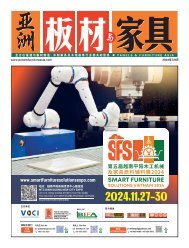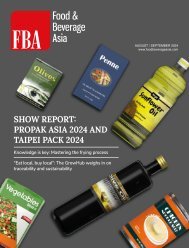Water & Wastewater Asia January/February 2021
Water & Wastewater Asia is an expert source of industry information, cementing its position as an indispensable tool for trade professionals in the water and wastewater industry. As the most reliable publication in the region, industry experts turn this premium journal for credible journalism and exclusive insight provided by fellow industry professionals. Water & Wastewater Asia incorporates the official newsletter of the Singapore Water Association (SWA).
Water & Wastewater Asia is an expert source of industry information, cementing its position as an indispensable tool for trade professionals in the water and wastewater industry. As the most reliable publication in the region, industry experts turn this premium journal for credible journalism and exclusive insight provided by fellow industry professionals. Water & Wastewater Asia incorporates the official newsletter of the Singapore Water Association (SWA).
Create successful ePaper yourself
Turn your PDF publications into a flip-book with our unique Google optimized e-Paper software.
FOCUS 27<br />
Growing industrial businesses<br />
in South East <strong>Asia</strong> with<br />
smart water management<br />
By Evan Jayawiyanto, Ecolab, South East <strong>Asia</strong>, AVP and GM, Nalco <strong>Water</strong> Division<br />
While we are dealing with the<br />
devastating effects of COVID-19,<br />
another equally impactful, longerterm<br />
crisis looms ahead: water<br />
scarcity.<br />
By the year 2040, it’s estimated that<br />
water use globally will exceed supply<br />
by as much as 40%. In Indonesia<br />
and Malaysia, palm oil milling<br />
consumes 3,500 to 7,500 litres of<br />
water per metric ton of oil produced,<br />
used in fruit processing, steam<br />
boilers and water-intensive cooling<br />
systems. That means by end of this<br />
year, with global production of palm<br />
oil of 72.27 million metric tons, palm<br />
oil processing absorbed an amount<br />
of water roughly equivalent to the<br />
water volume of Indonesia’s largest<br />
lake, Lake Toba.<br />
Palm oil is not the only thirsty<br />
industry. In South East <strong>Asia</strong>, the<br />
rapid rise of data centres, powering<br />
cloud computing across the region,<br />
is also impacting water supplies.<br />
<strong>January</strong> / <strong>February</strong> <strong>2021</strong> • waterwastewaterasia.com


















